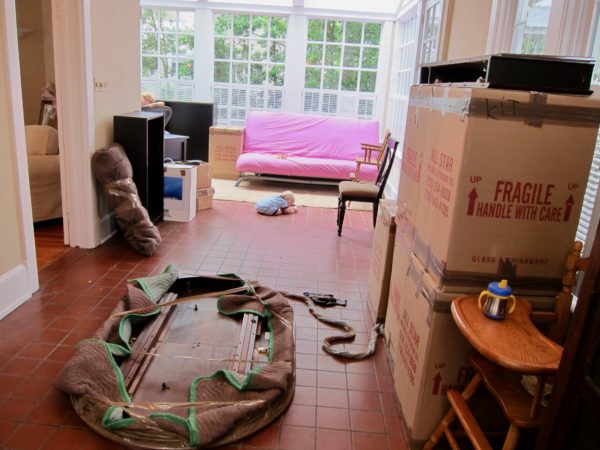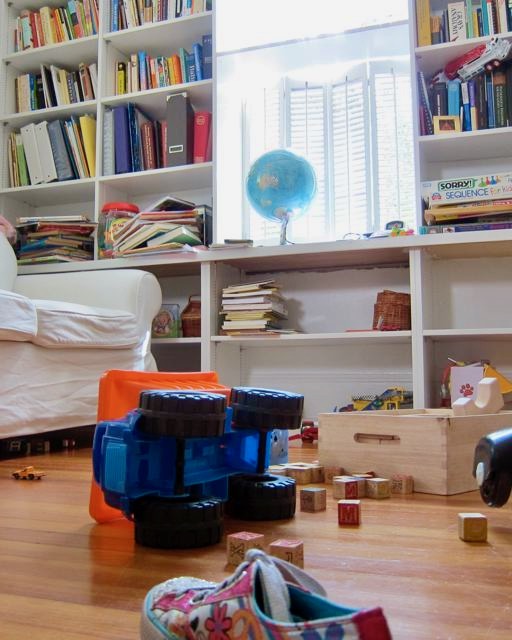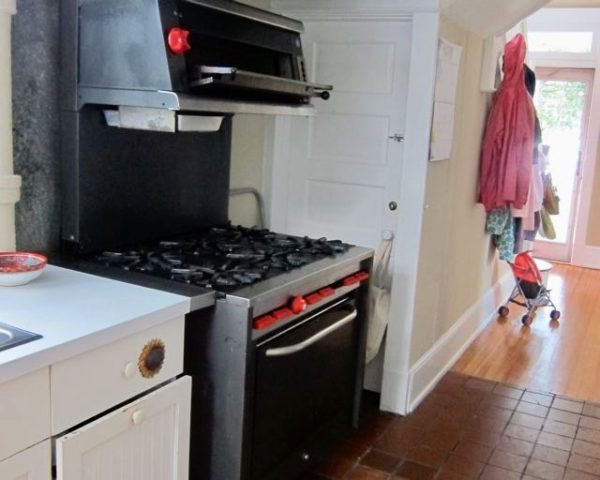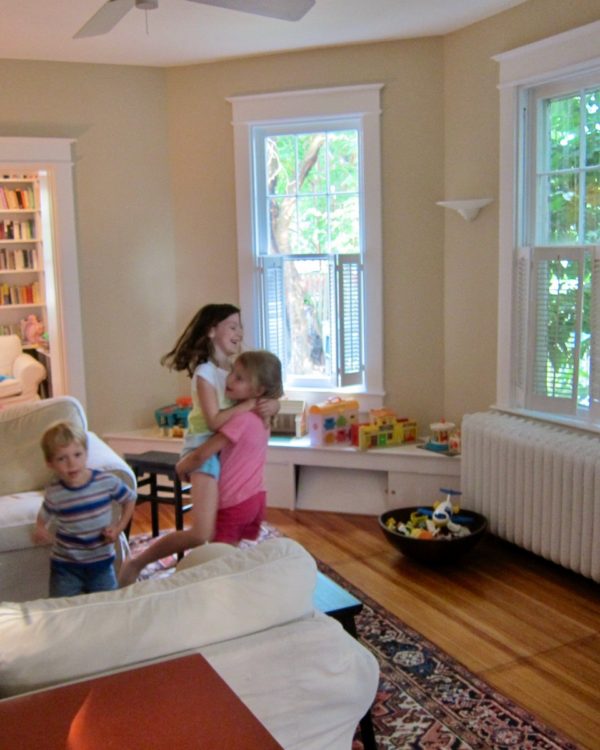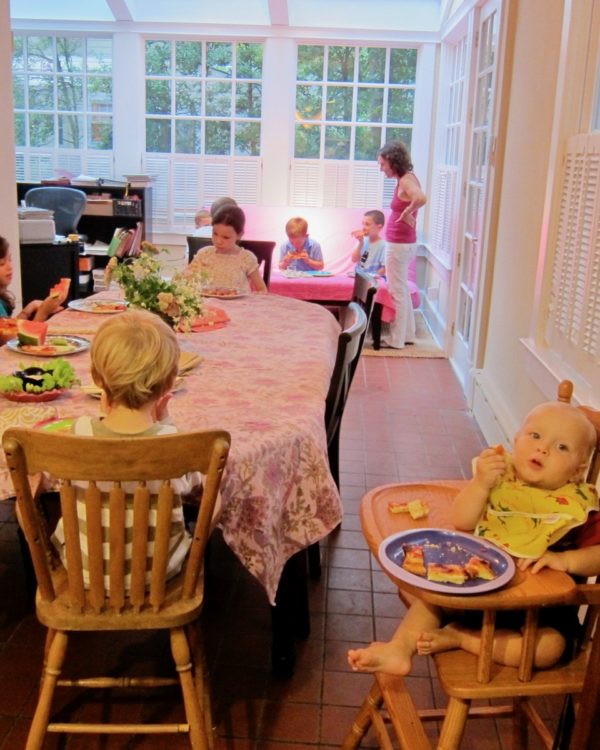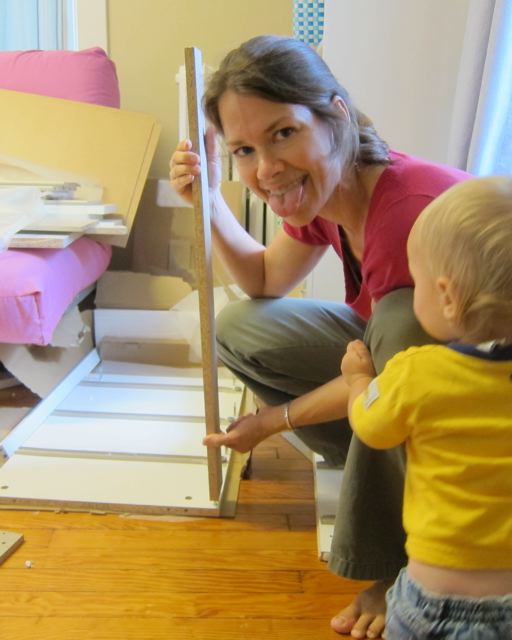
When Enrico and I were just starting out, we would head straight to IKEA when we needed furniture.
Little did I know that four kids, five moves, and eleven years later, we would still be heading straight to IKEA when we needed furniture.
To be fair, I do have some nice-looking pieces from Target. And Craigslist, Goodwill, eBay, and the curb.
But here we are with our first house. I feel like such a grown-up. Except for the furniture-in-a-box part. I would love to be buying everything from an antiques store. Or, dare I say it? — Restoration Hardware.
The truth is, we barely made it to home ownership, and we’ve got a long way to go until we feel comfortable plunking down a chunk of change on a couch.

The red IKEA couch you see in our sunroom is not the kind you sink into like a cloud. But I can’t even buy a slipcover for the amount I paid for it.
It was actually white for years. When my mom (the family artist/decorator) thought we needed a blast of color here, I ordered a (lipstick red!) slipcover from IKEA for $150. I mean, that’s just a crazy-good price. I couldn’t even find a cover for a free Crate & Barrel armchair for less than $450.
I know everyone doesn’t have an IKEA nearby, so here are some more ways we have cut corners in decorating.
Place One Antique Piece in Each Room
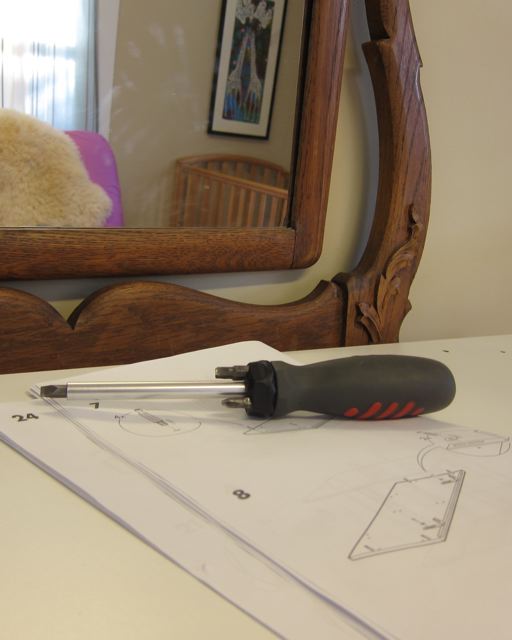
Antiques are expensive and they require lots of time to hunt them down and energy (and trunk space) to schlep them home. I tried really hard to get an antique table and chairs in Bouckeville, New York, but I just couldn’t find the right combination.
I ended up getting a dining set in a box from CSN Stores. It was a huge amount of money for us, but to buy a set from a real furniture store would have cost us four times as much.
So even though our dining set looks a tad cheesy to me, the antique pie chest that my parents gave us sort-of elevates everything else in the room. Same goes for this dresser (above) that I found in a second-hand shop. It’s rich curvy wood balances out the austerity of the Swedish furniture.
Reupholster Yucky Chair Cushions
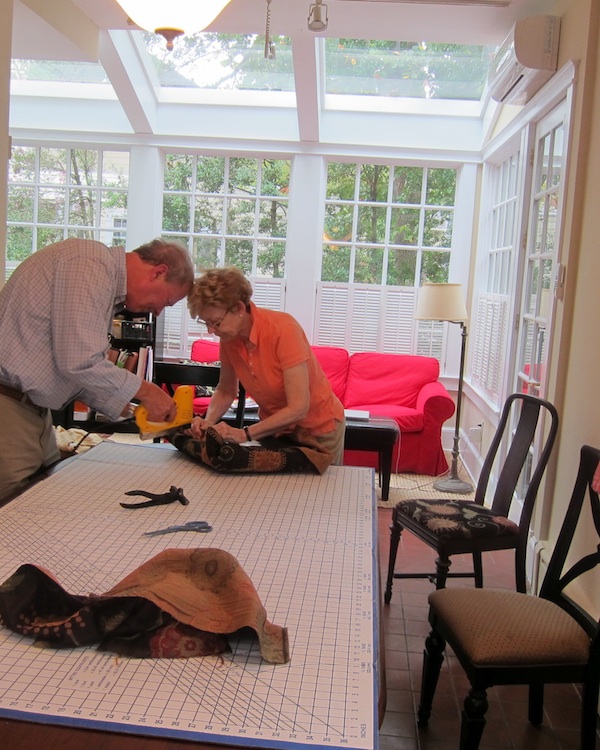
The chairs that came with our dining set were comfortable, but the cushions quickly got stained and gross. My parents were here recently to help us fix up the house, and they were able to recover the cushions in less than 1/2 hour each.
All you need is a screwdriver and a staple gun. For step-by-step instructions, see How to Reupholster a Dining Chair.
Buy Designer Fabric Remnants on eBay

When we recovered some Art Deco chairs that I bought from a consignment shop (which are now rickety and broken in the basement), my friend Ghi who likes to quilt suggested I look on eBay for fabric yardage. Who woulda thunk?
I searched for “art deco” under fabric and paid about $10 a yard for a remnant that was enough to reupholster those four chairs, plus our six new ones.
Use Prints of Vintage Posters as Art
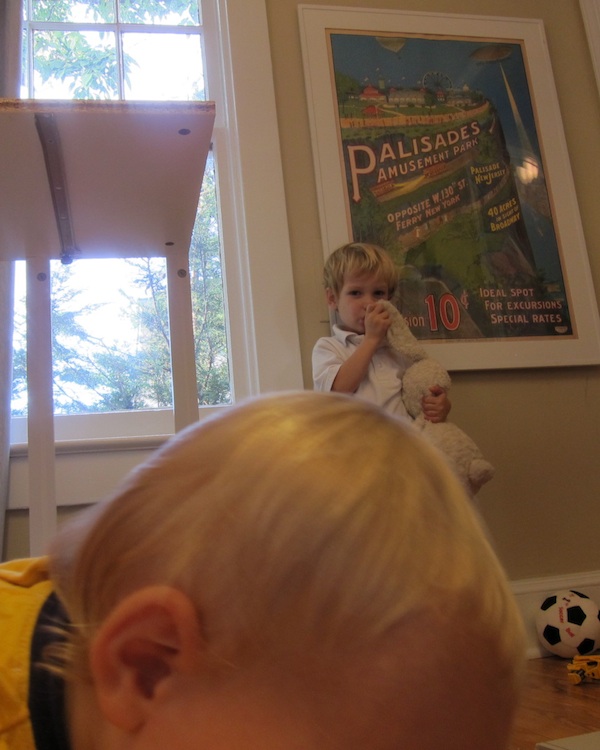
I love old-fashioned carnival and circus imagery. I found this print on Art.com and got it framed cheaply and shipped to me.
We also found prints of vintage Italian posters on eBay, which I got framed during a promotion at a craft store like Micheal’s.

Hit HomeGoods & TJ Maxx for Accessories
Our master sink is (still) not working, but that didn’t stop us from picking up $6 bath towels at TJ Maxx to match this gray rug we found at IKEA.
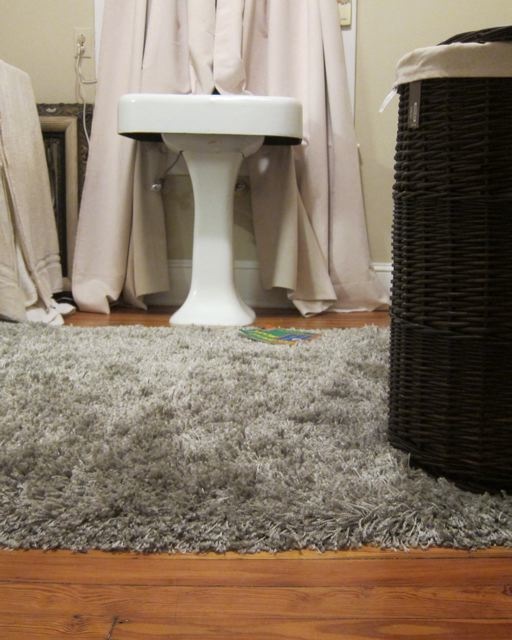
Discount stores like HomeGoods and Marshall’s are my friends. Not only do most of my clothes originate there, but so do some of our bed linens and cooking utensils.
They’re also good places to look for bins and organizers. The most difficult part is getting out of there without a bunch of stuff I don’t need!
Use What You Have
It’s so tempting to run out and buy something to fix the situation, fast. But with some brainstorming, you can come up with ways to make do with what you have.
Many times I tried to get rid of a cheap white bookcase I got at Target, but my mom convinced me it was fine and my dad propped up the sagging shelves with a just-right-sized book. And wouldn’t you know it, it’s still with us.
You might want to consider enlisting design help, however, from a friend or colleague. My mother, who has always helped us decorate, cannot make decisions about her own house, so she hires an interior designer.
If you need that objective eye to take a fresh look at your place, a budget choice is a re-designer, or someone who works with what you have. Sometimes called day-designers, these trained professionals can help you re-imagine your spaces, pick paint colors, and shop for curtains. They often charge a per room or per day fee.
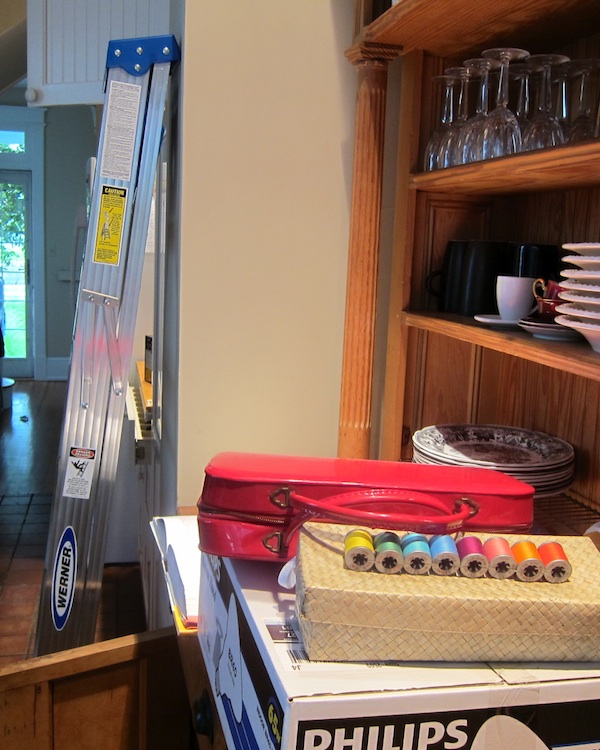
Going back to our trip to IKEA last weekend. This story has a happy ending. Yes, I thought I would be richer at this point in my life, but I didn’t come home from our trip to IKEA defeated. In fact, I felt victorious.
We managed to find some stylish and pretty high-quality rugs, chairs, curtains, and a dresser. The kids had fun tumbling onto display beds at the store and playing hide-and-seek in the playhouses. We stopped at the restaurant for dinner and gave Luke his first taste of Swedish meatballs.
I felt proud of my resourcefulness. And, you know what? It won’t look like a million bucks, but the house will look pretty damn good. Perhaps more importantly, we slept well that night knowing that we didn’t overspend. (Especially my husband, who took it on himself to lug into the house those leaden boxes. Hey, I’m the one who wields the screwdriver.)





